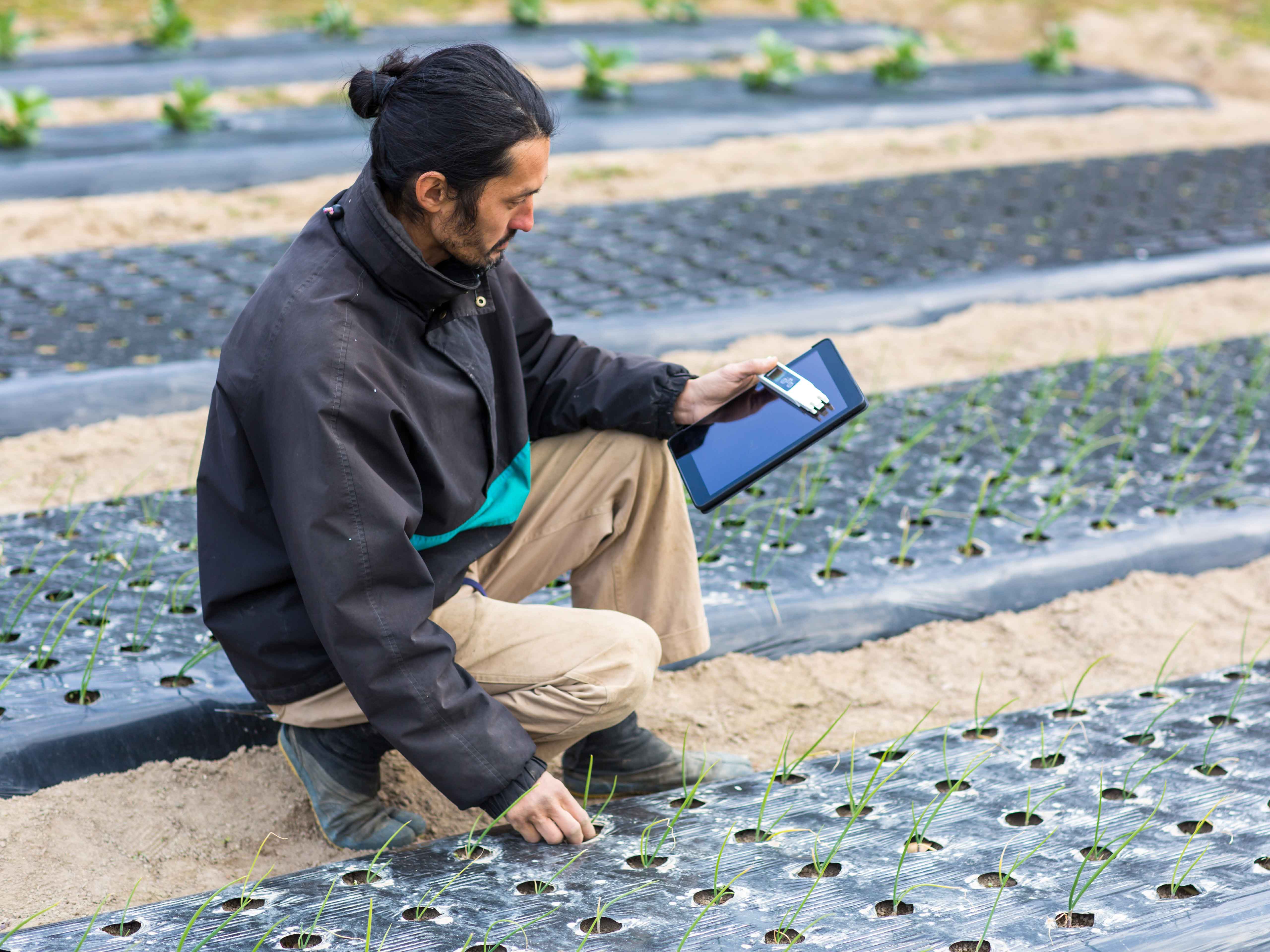Top 5 food tech innovations
Today’s food and agriculture companies are striving to feed a growing population in a world under increasing under threat from climate change. Innovation in how we produce food could be the answer

Innovation is desperately needed to overcome the colossal challenge of producing more food in a more sustainable manner. Lab-grown meat and genetically modified crops could be part of the solution
The food industry is undergoing a new wave of technological disruption. This is largely due to a recent spike in global investment activity. In 2018, SoftBank’s Vision Fund led a $200m investment round in agricultural technology. The year before, total investment was over $1.5bn – a record-breaking amount for the sector.
There is a unique sense of urgency behind this disruption. While population forecasts show demand for food will skyrocket in the next few decades, predictions for the rate of climate change show crop yields are expected to drop by a quarter in that time. Innovation is desperately needed in order to overcome this colossal challenge.
Lab-grown meat
Previously the stuff of science fiction, lab-grown or ‘cultured’ meat is soon to arrive on our dinner tables. When the first lab-grown burger was unveiled in 2013, it cost $280,000 to produce. Now start-ups believe these burgers could soon hit supermarket shelves for $10 each.
Around the world, demand for meat is expected to increase by 70 percent by the year 2025. The mass production of lab-grown meat could fill this critical gap in the food supply chain. AT Kearney predicts that by 2040, 60 percent of all meat consumed globally will come from lab-grown substitutes or plant-based alternatives.
The meat industry has increasingly come under fire for its contribution to global warming. The Adam Smith Institute has found that moving away from traditional animal farming and slaughter could reduce greenhouse emissions by up to 96 percent and free up to 99 percent of the land used in animal farming worldwide.
While forecasts show demand for food will skyrocket in the next few decades, predictions for the rate of climate change show crop yields will drop by a quarter in that time
Biodegradable packaging
We know that our addiction to plastic is unsustainable. Its prevalence is nowhere more apparent than in the food industry — but this is a difficult problem to solve. In the rush to adopt eco-friendly materials, many retailers and restaurants have started using packaging that, on closer inspection, still poses a threat to the environment. In one recent controversy, restaurant chain Chipotle was found to be serving food in their flagship compostable bowls, when in actual fact they contained high levels of the toxic compound fluorine, which made them non-degradable and possibly carcinogenic.
Many companies are now developing innovative biodegradable alternatives that harness waste products in the food industry, such as the six to eight million metric tons of shellfish waste produced every year. Scientists have found a use for this waste by turning the chitin from the shells of shellfish into chitosan, which serves as a biodegradable plastic wrap that could be used in food packaging.
Ghost kitchens
In the US, the restaurant delivery service industry makes up $19bn of the economy. However, the rising popularity of services like Deliveroo and Uber Eats can be bad news for local restaurants. Delivery charges can take around 25 to 35 percent in commissions, which can eat into restaurants’ already slim profit margins. Coupled with the costs of operating a restaurant, many are choosing to cut out the middleman and embrace a fully virtual restaurant model.
So-called ‘ghost kitchens’, or cloud kitchens, are focused purely on making fast-food deliveries. They have no dining area, meaning they can cut back on labour and rent costs. One of the major players in this sector right now is Rebel Foods, which operates 235 kitchens across 20 cities in India and is poised for global expansion.
Vertical farming
There are high hopes vertical farming could reinvent agriculture and meet rising demands for food. Vertical farming is the umbrella term for crops that are grown indoors in urban areas, usually inside huge warehouses. Urban farms present an attractive solution in countries where there’s very little arable land, or in countries that are very dependent on imported food. Vertical farms use much less land and water, and even produce 200 to 400 percent higher yields thanks to close monitoring of the plants’ nutrition intake. This also negates the need for pesticides.
However, in its current form, vertical farming uses a significant amount of energy, most of which is used to power hydroponic systems and artificial light. Until vertical farms can harness renewable energy on a large scale, a more sustainable option might be to harness the rooftop space in cities.
Super crops
In an increasingly challenging climate, people will require crops that are more resilient to extreme weather while also being richer in nutrition. This can be achieved through selective breeding and biofortification, where micronutrients are added to foods at the agricultural stage by crossbreeding standard plant varieties with their wild relatives. Genetic engineering is another option; scientists have found they could genetically modify crops to make them more drought-resistant.
Examples of such super crops include ‘scuba’ rice, which can survive even if submerged underwater for two weeks, and iron-rich beans that can withstand a temperature change of as much as four degrees. Scientists in Dubai are modifying crops like quinoa so they can thrive in the country’s salty and arid deserts. Crops like this could be transformative in areas like sub-Saharan Africa, where malnutrition and deficiency in vital nutrients – crucial for staving off disease and improving cognitive function – is prevalent.













